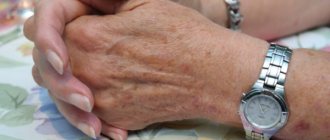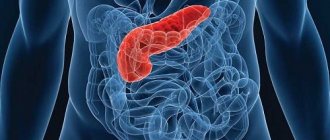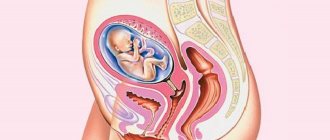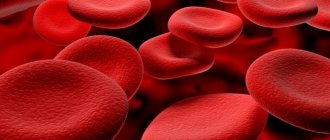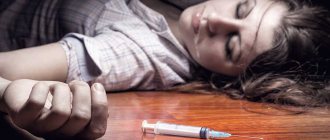It's easy and interesting to communicate here. Join us!
For the child - an ambulance, for parents - the police.
Give a lot of water to drink and 1 tablet of activated charcoal.
Keep an eye on the child.
Give more water throughout the day.
In the morning, give him a beer to soothe his hangover)
It was a must watch!! ! no eyes. Well, you guys are stupid, why the f*ck put alcohol where the child can get it! Kill the child!
If this just happened, it’s better to do a gastric lavage. Alcohol poisoning may occur. It is best to call the emergency room and get advice.
I don’t understand why you should write that someone is stupid, blind, etc. An intelligent person would not answer like that. You were asked, you answer. There is no need to be rude. And children are capable of anything. Certainly an unpleasant moment. I think it's worth doing a rinse.
stop drinking!! ! To do nothing.
As with any poisoning, drink plenty of fluids and use means to induce vomiting.
Call resuscitation and toxicology.
You should prevent the consequences of possible poisoning in your baby. Give him polysorb, it is a safe and effective sorbent. Also give your child plenty of fluids. And monitor his well-being. If anything goes straight to the hospital
Where were you looking?
It’s better to see a doctor; if the alcohol is undiluted, there may be a burn to the larynx, esophagus, or stomach.
Alive? Give me a drink. If you don’t burn your throat, then nothing will happen - you’ll sleep it off.
It’s clear that you’re a slob. and secondly, if you take it on an empty stomach, it will burn... and even if the child is full, if the child burns his entire throat and esophagus, of course, go to the doctor.
He couldn’t drink two, because after the first he was already spitting and spat out some of it. I would still call an ambulance. Vodka burns, but here it’s still alcohol.
nightmare. more water. coal Better yet, call an ambulance!
Call an ambulance and kick the person in the head who put the alcohol in a place accessible to the child.
call an ambulance and ask for advice! Mine somehow took a sip of wine, nothing, then went to bed))
Most often, the first victim of poisoning is a baby, because his natural curiosity is accompanied by a lack of awareness of the danger to which he is exposed due to some of his actions. But often adults themselves are not prudent, leaving toxic and therefore dangerous substances in places accessible to the child. This could include leftover bleaches, laundry detergents, medications, alcoholic beverages, medications, cleaning agents, cosmetics, insecticides, and some gases and fumes.
It is worth noting that bright packaging arouses children's interest.
In this case, you first need to find out what he ingested and call an ambulance (a poison center, sometimes his phone number is on the label) before taking measures that could cause harm.
The scary-sounding term “poisoning” refers to the penetration of substances that are harmful to the body into the body through ingestion, inhalation, and skin contact. Although many poisons cause only short-term stomach upset, they can severely damage the lungs and intestinal tissue; some poisons lead to death.
If your child swallows poison, call your local poison control center. Her phone number should be in a visible place. If not, call 911 or call the hospital. Give the following information:
• the name of the substance ingested and its ingredients;
• when the substance was ingested and in what quantity was expected;
• age and weight of the child;
• symptoms: cough, vomiting, unusual behavior, etc.;
• your phone number.
Ethyl alcohol poisoning
Ethyl alcohol (or ethanol) is produced by the fermentation of sugar-rich plant substances; their introduction into the stomach causes characteristic symptoms. The condition worsens as their levels in the blood rise and can provoke a deep coma and even lead to death.
Therapy for ethyl intoxication depends on the amount of the substance ingested and how much time has passed since that moment. If less than 4 hours have passed since the child ingested a large dose of alcohol, gastric lavage is performed to slow down the absorption of the product remaining in the stomach.
Symptoms of alcohol poisoning in a child
As was said, there is no time to panic. But it is necessary to establish for sure that the child swallowed alcohol and not some other toxic substance. Carefully examine everything around - perhaps the container from which he drank is somewhere nearby, and then you will be able to determine exactly what and how much your child drank. If not, try to ask him, of course, if the injured child is able to speak clearly. If none of these options is possible, pay attention to the following indicators:
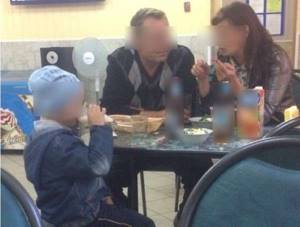
- in a mild degree of alcohol poisoning, the child is conscious, but does not behave quite adequately: his eyes are shiny, his speech is slurred, his gait is wobbling;
in more severe cases, visual disturbances are noted, the child is unable to stand on his feet, reacts poorly or completely ignores calls to him, and practically cannot speak. Vomiting often occurs at this stage;
In extremely severe alcohol poisoning, coma occurs. Breathing is weak and intermittent, the pulse is almost not palpable, the skin is cold and may be covered with sticky sweat.
If emergency assistance is not provided, cardiac arrest may occur.
First aid for rat poisoning
Having received information that a person has eaten rat poison, you should immediately call an ambulance, regardless of whether you managed to extract it yourself. Before the doctor arrives, it is necessary to take a number of measures to reduce the toxic effects.
First of all, the victim should be asked to drink three liters of water to vomit in order to get rid of the poison. This action helps prevent the absorption of anticoagulants and their movement throughout the body.
Without fail, after gastric lavage, the patient will need to take activated carbon or another sorbent. Then drink a saline laxative to get rid of toxic substances inside the body as quickly as possible.
The patient should not eat food under any circumstances. It is strictly forbidden to sleep until the doctors arrive. Outside observers will be required to stir the victim so that he does not fall asleep.
If rodenticide gets on the patient's skin, immediately wash it off with warm water and soap. If itching occurs on the skin, consult a specialist. If the poison gets on the mucous membranes of the eyes and mouth, rinse thoroughly under running water. If your eyes become red or burning, do not delay visiting an ophthalmologist.
What happens in the body
Even small doses of low-alcohol drinks can cause irreparable harm to a child’s body. Alcohol first enters the stomach. It is noteworthy that alcohol with a strength of up to 30 degrees is absorbed faster than stronger alcohol.
Vodka, cognac, and alcohol cauterize the gastric mucosa and thereby stop absorption into the blood. From the blood, alcohol is then distributed to all internal organs, including the brain. The liver is primarily affected - it is here that alcohol breaks down into heavy toxins and poisons the body.
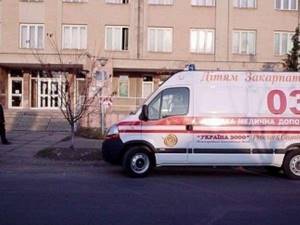
First aid rules for poisoning by poisonous plants
It doesn’t matter whether you know or not what exactly the poisoned baby “fed” - you need to act as quickly, clearly and confidently as possible:
- Look into the child’s mouth and, if he has not yet finished eating his poisonous “food”, take out all the particles of the dangerous plant that you see (but do not throw away - these remains may be useful for analysis).
- Have your child rinse their mouth thoroughly and several times with cold water.
- If less than 30 minutes have passed since your child ate a poisonous berry or plant, you can deliberately induce vomiting. To do this: first give the child a glass of cold milk or tea, then gently put two fingers down the child's throat and move them slightly.
- If more than half an hour has passed since you ate a poisonous plant or berry, there is no point in clearing your stomach by vomiting. Now you can “collect” poisons and toxins only with the help of a powerful adsorbent. The safest and most effective of which is activated carbon. The minimum dosage for poisoning is 1 g of coal per 1 kg of child weight.
Well-known children's doctor, Dr. E. O. Komarovsky: “There is never too much activated carbon! The more coal tablets a child can swallow, the faster the effects of poisons and toxins will end. In general, for any poisoning (even with poisonous plants, even with chemicals and drugs, even with alcohol and drugs - it doesn’t matter) activated carbon is one of the best adsorbents.”
- If severe symptoms begin to be observed (difficulty breathing, heart rhythm disturbances, swelling of the larynx, loss of consciousness, convulsions, etc.), immediately call the rescue service, the nearest ambulance station, or rush with your child to the nearest hospital. For all other symptoms (diarrhea, vomiting and others), it is also extremely useful and correct to immediately consult a doctor - usually, if a child of any age is poisoned by any poisonous plants and with any symptoms, they are placed in a hospital for a day. Don’t be alarmed, this is justified - after all, symptoms of poisoning with poisons, including plant ones, are always unpredictable and may not appear immediately.
What should you do first if your child drinks alcohol?
If the child is conscious, you should try to induce vomiting and perform gastric lavage. A weak solution of potassium permanganate helps in this case. Then you need to give him an adsorbent - activated carbon, smecta, atoxin and other similar drugs.
Has the child lost consciousness? Do not hesitate, lay him on his side so that he does not choke if he vomits, and immediately call an ambulance! Most likely, your child will be taken to the hospital to remove alcohol breakdown products using a dropper and medical lavage of the stomach and intestines. Don't resist, these are truly necessary measures. Remember that a child's liver is not yet fully formed and is not able to cope with alcohol as well as an adult's. The more time has passed since the child swallowed alcohol, the more difficult it will be to remove it from the body. This means that the risk of damage to internal organs increases, the consequences are simply unpredictable.
As you know, it is easier to prevent a disaster than to eliminate its consequences later. Remember this the next time you host a feast or simply leave drinks containing alcohol in sight.
31 March 18 at 00:00
You will receive notifications about new articles by this author by email. You can unsubscribe from notifications at any time by clicking on the special link in the text of the letter.

“I will never drink,” my niece firmly promised me when I, along with her mother, tried to convince her that the company she valued consisted of novice alcoholics. And she responded by asserting that the guys from her group were the very best: smart, funny, cool, and the list went on. Well, the fact that the majority are drinkers, some even with experience, despite their very young age, did not bother our Belochka.
“Nobody forces anyone to drink here.” For example, I’ve been hanging out with these guys for a year now - have I ever drank? And with others I'm just bored.
Overwhelmed by these arguments, we were forced to retreat. But in vain. Because not even a couple of months had passed before our teetotaler came home drunk.
As it turned out after urgent meetings with other mothers and fathers, in the company of our children there was a certain major who spent the money allocated to him by his parents exclusively on parties with cool drinks. And even those who had previously taken a little bit just to support the company gradually became more and more involved.
Towards the end, even our Belka began to give up. Having noticed her drinking a couple of times, we were, frankly, confused. And Squirrel’s mom and dad, and we, their closest relatives. Because our first attempts to change something were met with severe rejection. The previously sweet and obedient child, who did not cause any problems, changed dramatically before our eyes. Any attempt to discuss the problem with her was met with a glassy look and a stubborn expression on her face.
No, no, she wasn’t rude, didn’t object, didn’t argue with us at all. She simply pushed us aside, like something unnecessary now. Although, according to her, she continued to love and even appreciate us all, she did not perceive any of the people close to her as an authority in this matter.

The body of a 10-year-old child was found in the apartment: mysterious death, “drank poison”
In Vinogradovsky, Transcarpathian region, a 10-year-old boy drank poison and died
It is known that at the Main Directorate of the National Police, the message that the death of a boy born in 2008 was pronounced dead in the ambulance was received from doctors at 14:00, Mukachevo.net reported this.
Law enforcement officials report that the preliminary cause of death is poisoning by an unknown substance that was drunk by a guy at home. Experts will determine the true cause of death, and the unknown liquid that the child drank will also be determined.
Proceedings have been opened under Part 1 of Article 115 of the Criminal Code, that is, premeditated murder, in order to carry out appropriate investigative actions.
Earlier it was reported that the life of a child who was thrown out of a window by a drunken father is no longer in danger.
Popular articles now
Ukrainians were subject to taxes and fines for housing, who will have to pay: “Annually 25 thousand hryvnia...”
Retirement at 60-65 years old is in question, Ukrainians were sobered up with innovations: “If a person...”
The son of Ani Lorak's young lover kept his star mother company: an eloquent shot
Military aircraft were raised in the sky over Odessa: footage of what is happening
show more

Emergency in the capital's metro: an acid attack began, first details
A five-year-old boy from the village of Klugino-Bashkirovka, Chuguevsky district, who was thrown from a fourth-floor window by his drunken father on the night of January 13, was diagnosed by doctors with a soft tissue bruise. Elena Poleshchuk, deputy chief physician of the Kharkov Emergency and Emergency Hospital, spoke about this, reports UA Kharkov. According to her, there is no danger to the child's life. He can be discharged home today. According to Anna Tretyakova, a regional police press officer, a suspect in the crime was detained. This is a 40-year-old boy's father. He had already been informed of the suspicion. The man does not deny his guilt. According to police, he had been drinking alcohol the day before.
Investigators opened proceedings under the article “attempted premeditated murder.” This is up to 15 years in prison.
Let us note that, most likely, the child did not receive serious injuries only due to the significant amount of snow under the windows of the house. The area fell asleep for several days, so the “pillow” saved the boy.

Let us also remind you that a child was born in a large family - the eighteenth in a row.
There is a new addition to a large family that lives in the village of Poznan, Rokitnovsky district, Rivne region. A girl was born. This is the eighteenth child in the family. The head of the regional state administration, Alexey Mulyarenko, wrote this news on his Facebook page.
“A successful state begins with a large family. Good news. Mother of many children Lyudmila Kovalevich from the village of Poznan, Rokitnovsky district, gave birth to her eighteenth child,” said the chairman of the Regional State Administration. Alexey Mulyarenko added that the baby and mother are doing well.
It was reported that the Michigan flu is approaching Ukraine, a disease that promises serious complications for everyone, and children may be among the victims.
It has also been written about the pros and cons of keeping dogs with a child.
Politeka also reported that the baby flew down the hill directly under the wheels of the tractor.
Looking for a sober solution
Consultations with psychologists also yielded nothing: everything they offered required a long time. And, according to our feelings, we almost didn’t have it. Attempts to rein in the major through his parents were not crowned with success at all. According to them, their son did nothing special.
“When he grows up, he’ll go crazy,” the mother of this over-aged moron told us.
We obviously didn’t want to involve the school, so that they wouldn’t label our girl and most of her friends as alcoholics. In a similar situation in a parallel class, instead of helping, the school turned to the juvenile affairs inspectorate. God forbid from such assistants!
In the end, after consulting and enlisting the support of other parents, we accepted the plan proposed by my husband. At one time, his parents did just that, which forever discouraged him from drinking and smoking.
We found out when the next birthday of someone from the Belkin company was - it turned out to be the 15th anniversary - and offered our dacha for the holiday. They promised that adults would not interfere or pretend to be present. No bans on alcohol, no encroachments on their personal freedom - let them rage as they please. Like, since such a wonderful date, we are only happy to help celebrate the way they themselves want. The only condition: no destruction of furniture and dishes. And so that the next day everyone would clean up after themselves.
The children agreed with pleasure. We organized everything ourselves. And, judging by the clinking bags, they stocked up a lot of alcohol.
With a heavy heart, we adults left the children alone. We returned for them late at night. The kids turned out to be dead drunk. We carefully filmed the entire evacuation process and the state of the dacha after the “holiday”, and then took all the “carcasses” home.
Our children woke up in a terrible state. Some are even the most terrible, which we shared with each other immediately. After which we took them to the dacha to “clean up.” Naturally, already in our active presence. Cleaning has become torture for most. And we also encouraged: we sympathized, suggested where more garbage was lying around, counted the bottles...
Why do they drink
Since then, I have been carefully monitoring all publications related to childhood alcoholism. For some reason, most are devoted to the problems of children in families of drinking parents. It turns out that 80 percent of children from such families are considered prone to alcoholism. But we didn’t have these prerequisites! My brother's family and my family don't drink at all. Our Belka had no place to study negative experiences. So why did we barely manage to get out of this trouble?
Maybe the whole point is just the absence of negative experience or, at worst, a negative example? Maybe our children need to periodically organize excursions to some homeless shelters or prisons where drunks picked up on the streets are kept? Let them look, smell, try it on.
And then it occurred to me: maybe the whole point is precisely the absence of negative experience or, at worst, a negative example? Maybe our children need to periodically organize excursions to some homeless shelters or prisons where drunks picked up on the streets are kept? Let them look, smell, try it on.
After all, in my opinion, every family these days will sooner or later face similar problems.
In the meantime, here is the most typical list of reasons that are cited as the basis for childhood alcoholism:
No attention in the family. Because their parents are busy, children become lonely and look for a way to attract attention.
Too much pocket money.
Curiosity. After all, adults or friends did not warn that things could get bad.
Emotions ran high: first love, death of loved ones, family breakdown.
A bad example in your immediate environment: someone from your family, friends or neighbors drinks.
An attempt to gain authority among peers through imaginary adulthood.
School problems, the inability to solve them on your own.
Even more advanced psychologists claim that there are only two reasons: adults do “this” and adults forbid doing “that”. Everything else is derivative.
Everyone writes that reading lectures in these cases is useless, persuading and threatening are also useless. If you get too much pressure, your son or daughter will simply become secretive, but they won’t stop drinking. Arguments like “you’ll become a drunk and die” won’t work either, especially if the children have seen their parents drunk more than once. You won’t keep your children away from their friends, even if they drink: at this age, friends often seem more important than family. Should I bury my head in the sand and wait for everything to resolve itself? Alas, this is far from true.

It is also believed that one should not supervise children or drink together. And what in return? Only doctors and psychologists? But it’s often more difficult for parents to turn to them than to tolerate a drinking teenager nearby.
Of all the advice on numerous sites, I would listen to only one. If things disappear from the house and it becomes clear that your child has some kind of addiction, you urgently need to change his environment: school, district, perhaps even the city.
Well, you really need to contact doctors urgently if it’s not alcohol, but drugs, that are to blame for your problems. This is where you really need to ring all the bells, and don’t care about reputational costs – yours or your child’s. My recipe given above - about “knocking out a wedge with a wedge” - is categorically not suitable for drugs.
But in general, you wouldn’t wish it on your enemy if this is the situation in your family. We can only hope that at least some trust will remain between the teenager and some of the adults around him and that this will help him eventually get rid of his problems with alcohol.
Help for Pregnant Women and Mothers
Free hotline in difficult life situations
Many parents do not know what to do if their child drank vinegar, brilliant green, Corvalol or cleaning product. It is important for adults to prevent this situation, or if it occurs, to provide timely help at home.
Characteristic symptoms and first aid for insecticide poisoning
Insecticide poisoning can cause serious harm to human health, which is why it is so important to know the symptoms and provide first aid in a timely manner.
Unfortunately, the latter factor can cause colossal damage to the human body, since insecticides are often used to enhance plant growth.
Insecticides are synthetic substances that are designed to accelerate plant growth, rid them of possible pests and increase harvest volumes. Today, these substances are widely used throughout the world, including on small plots of land and on private farms.
There are more than twenty types of such products, and all of them are designed to fight insects. At the same time, few people know what harm insecticides can cause to humans, and what symptoms often accompany poisoning.
Over the past few years, the following types of insecticides have become particularly widespread:
- Organochlorine compounds.
- Organophosphorus compounds.
- Pyrethrins and their varieties.
- Arsenic and sulfur.
- Minerals.
- Cyanide substances.
Insecticides are often used to get rid of pests that cause serious damage to crops. For example, a chemical mixture can get rid of the Colorado potato beetle in a potato field and locusts in a wheat field.
Vinegar, apple cider vinegar
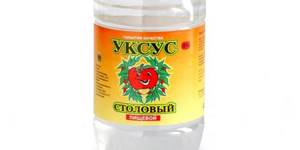
Almost every home has acetic acid. Vinegar must be stored with care. Small children may mistake a bottle of acetic acid for water and drink it. Therefore, you should keep vinegar away from children.
If a child drinks vinegar, this can lead to irreversible consequences. In such a situation, parents should show calm and immediately call medical personnel or an ambulance.
When acid enters the body, it burns the mucous membrane of the esophagus and stomach. The severity of the complication is determined by the amount of vinegar ingested. If the child has taken no more than two sips, the complication will be a small burn of the esophagus.
If more than 50 grams enters the body, the stomach burns, and the acid penetrates through the blood into the internal organs.
Before medical help arrives, rinse your throat and mouth with water. The child needs to drink a lot of cold (preferably ice) water. When a large amount of water enters the body, the concentration of vinegar in the stomach decreases. It is not recommended to give a soda solution and induce a gag reflex. This can lead to rupture of the esophagus.
Place ice in a towel on the baby's belly (where the stomach is). The child should lie down with a large pillow under the head and upper body.
When doctors arrive, they will lavage the stomach using a special tube. This procedure is very effective, but painful. If the child drank a little acid, you can do the rinsing yourself at home. But if you experience headaches, lethargy, or agitation, you should seek medical advice.
First aid and treatment for intoxication
If signs of intoxication with insecticides are detected, it is necessary to provide assistance to the victim as soon as possible. This will help avoid negative consequences. Emergency assistance includes simple steps:
- A team of doctors is called.
- If the victim is unconscious, they try to bring him to his senses.
- If the insecticide enters the digestive system, then perform gastric lavage.
- After the procedure, the victim is given sorbents - Polysorb, Enterosgel, activated carbon.
- If poison gets into the respiratory tract, inhalation with a soda solution is recommended, and it is allowed to give medications to promote expectoration.
- If a toxic compound gets on the skin, it is recommended to apply zinc ointment to the affected area and apply compresses of potassium permanganate solution around it.
- If chemicals get into your eyes, rinse with cool water for 10 to 15 minutes.
- The victim is given plenty of fluids to drink; it is permissible to use the drug Regidron.
- The patient is kept at rest until the ambulance arrives.
Further treatment is carried out in a medical facility. Therapy is selected based on the type of toxic substance.
Zelenka
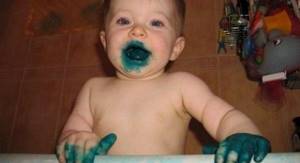
Zelenka is an alcohol solution of aniline dye (brilliant green). In Russia, no one in the world uses brilliant green anymore, since its mechanism of action has not been studied. Aniline dyes are toxic substances that cause complications if they enter the body. When ingested, brilliant green is absorbed into the blood and combines with hemoglobin. At the same time, oxygen leaves it and is replaced by the methyl group of substances. Methemoglobin appears, which ceases to participate in the transfer of oxygen to the tissues of the body. Oxygen starvation occurs, in which even oxygen maxi in ambulances cannot help.
Stages of brilliant green poisoning, and specific symptoms:
- With mild intoxication, the color of the skin becomes gray. The mucous membranes of the mouth and eyes are dark blue;
- With moderate intoxication, weakness uncharacteristic for a child appears, intense headache and dizziness, rapid breathing occurs due to lack of oxygen. At this stage, fainting, mental state disturbances (hyperexcitability or lethargy), problems with coordination of movements, and rapid pulse occur;
- In severe poisoning, coma occurs. The eyes do not react to light, the pupils are greatly constricted. Convulsions appear, leading to respiratory arrest, urinary and stool incontinence. Toxic poisoning of the liver, blood, and kidneys occurs.
Signs related to all stages of intoxication - severe, “burning” pain in the abdomen, gastrointestinal upset (nausea, vomiting). Many parents wonder what to do if their child drank brilliant green. The baby needs to urgently call an ambulance, rinse the stomach with warm water and give a sorbent - activated carbon.
Iodine is a preparation for external use; if ingested, it causes intoxication and severe burns of the mucous membranes.
The level of poisoning depends on how much pure iodine enters the body. For an adult, the fatal dose is equal to two grams of pure iodine. If a child spits out iodine and it does not get inside, the consequence will be a burn of the mucous membranes. It is worth noting that iodine vapor is no less toxic and can cause a malfunction of the respiratory system. Iodine poisoning can be acute - a single consumption of a large amount of iodine, and chronic - with daily contact with iodine.
Symptoms of poisoning if a child drinks iodine:
- There is a constant thirst that is not quenched by drinking liquid;
- Characteristic odor of iodine from the oral cavity;
- The tongue and mucous membranes of the mouth turn brown;
- Nausea and vomiting. The vomit is dark yellow in color. If blood is present in the masses, this indicates damage to the mucous membranes of the gastrointestinal tract;
- Diarrhea with blood clots;
- If you are allergic to an iodized substance, suffocation may occur.
If the child does not complain of stomach pain, you need to give him water to drink and induce vomiting several times (preferably 3-4). After vomiting, you should give activated carbon or other sorbents. And then drink water with starch. In case of iodine intoxication, consultation with a doctor is necessary.
What happens if you drink iodine or brilliant green?
Iodine and brilliant green solution are drugs that are in every home medicine cabinet.
These products are used for antiseptic purposes: to treat wounds and scratches. Both iodine and brilliant green are chemicals that have both beneficial and harmful properties. The bottles of solutions indicate that the medicine can only be used externally, that is, applied to the skin. We’ll find out what happens if you drink iodine or brilliant green from the article.
Is iodine dangerous in small doses?
In minimal doses, iodine in water is harmless and even beneficial for the human body. If you dilute 1 drop of iodine in a liter of water and drink a glass of this drink, a person will receive a week's supply of iodine. Such prevention is especially important for people with poor nutrition who rarely consume seafood.
A low concentration of diluted halogen (iodine) will help avoid problems with the thyroid gland and restore hormonal balance. But the procedure can be carried out no more than once a week. If you drink iodine every day, even a little, there will be an excess of the substance, which will negatively affect your health: intoxication of the body will begin.
21 interesting facts about sex
The safe amount of this substance for an adult is 150 mcg - 1 drop. Exceeding it can greatly harm the body.
What happens if you drink too much iodine?
Despite the fact that iodine is important for the full functioning of the endocrine system, you should not drink this drug in its pure form. You can compensate for the lack of an element with tablets, which along with it contain other useful substances. Such medications are completely safe for human health.
So, why can’t you drink an alcohol solution of iodine? The element is very toxic: when consumed internally, it causes severe poisoning and burns the digestive organs. A lethal dose is considered to be 3 mg. If a person drinks a jar of iodine, it will be impossible to save him, because the kidneys are destroyed and the heart stops.
Radioactive iodine, which emits beta and gamma radiation, is particularly dangerous. But such a halogen is rarely used for domestic purposes: it is used at nuclear power plants.
Symptoms of poisoning caused by internal iodine intake
Symptoms of intoxication with a substance become noticeable 20 minutes after taking the substance:
- Increased body temperature;
- Headache;
- Severe stomach pain;
- Burning in the chest and abdomen caused by a burn to the larynx, esophagus and intestines;
- Eyes become red and watery;
- Vomit;
- Diarrhea, stool becomes brown;
- The pulse quickens;
- Breathing becomes difficult, asphyxia occurs;
- Cough and sore throat.
A day later:
- Blood appears in the urine;
- The lungs swell;
- Kidney and liver failure occurs;
- Myocarditis develops;
- Convulsions begin, and several limbs can cramp at once.
Tick bite: consequences for humans and pets
First aid for a person poisoned by iodine
Action plan for iodine poisoning:
- Call an ambulance;
- Give the person a couple of liters of water to drink. This volume of liquid will cause vomiting. Water will flush the stomach: part of the iodine consumed will come out along with the vomit. The procedure is repeated 3 times;
- Drink activated carbon (per 10 kg of weight - 1 tablet). The tablets must be crushed, so the medicine will be absorbed faster;
- A homemade antidote will help remove the halogen. Mix starch with water; the drink should be the same thickness as jelly. Give the patient something to drink, preferably 1 glass;
- The person is placed on the bed, his head is turned to the side.
In a hospital setting, the patient will be given sodium thiosulfate injections and IVs will be placed to restore the patient’s strength. Treatment in a hospital also includes oxygen inhalation and painkillers. The body will recover after poisoning in an average of 2 weeks.
If you drink greenery
You can’t drink brilliant green, even in a minimal dose. All components contained in the drug are dangerous: ethyl alcohol, which burns the mucous membranes of internal organs, and aniline dyes, which poison the body. If you swallow brilliant green, intoxication will occur.
Symptoms of brilliant green poisoning:
- Stomach pain;
- Burning in the abdomen;
- Sore throat;
- Nausea;
- Vomiting, green;
- Migraine;
- Increased or decreased blood pressure;
- Heat.
Treatment for poisoning with brilliant green is carried out in a medical facility; first aid procedures are the same as for iodine intoxication. To restore the body, you need to drink at least 2 liters of water. This amount of fluid will remove remaining toxins from the body.
Why do men like big busts?
Is an aqueous solution of brilliant green dangerous?
An aqueous solution of brilliant green, which can now be found in pharmacies, is less dangerous than the alcohol version. If you “eat” this drug, there will be no burns to the larynx and other digestive organs. However, intoxication is possible.
Actions to take if a child is poisoned
Medicine bottles should be well hidden from children. A small child can swallow the solution, which is attractively colored. This is a dangerous poison for a child’s body. Every minute of delay can cost the baby's life.
In such cases, an adult must:
- Induce vomiting in a child: put 2 fingers in the baby’s mouth and press on the base of the tongue. You can provoke a gag reflex in another way: a spoon (the narrow end) is inserted into the baby’s mouth, and the larynx is irritated. If the child is over 3 years old, you can make him drink a lot of water to flush out his stomach;
- Call an ambulance;
- Give a double dose of Enterosgel.
Further assistance is provided only by a doctor. The child's stomach is washed out with a tube and taken to the intensive care unit. The baby has been in the intensive care unit for 24 hours.
conclusions
Main points of the article:
- Zelenka and iodine are the strongest antiseptics;
- The preparations are intended for external use only;
- Iodine and brilliant green can cause burns to the mucous membranes of the digestive system;
- Internal use of solutions leads to intoxication.
to the point
Source: https://udipedia.net/chto-budet-esli-vypit-jod-ili-zelenku/
Chlorhexidine
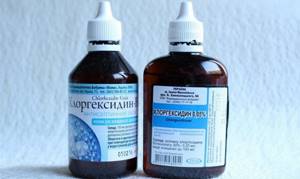
If the child drank chlorhexidine, then the following manipulations should be performed:
- Rinse the stomach. The child needs to drink warm water and induce a gag reflex;
- Accept sorbents;
- Limit food intake for two hours.
If during the rinsing procedure a child accidentally drinks a little chlorhexidine, this will not cause serious consequences. In medical practice, there are a couple of cases where chlorhexidine had a negative effect on the body:
- A student accidentally drank a 20% concentrate (the percentage should not exceed 0.2%), and he experienced the following symptoms of poisoning: headache, changes in visual acuity and eating preferences, and unreasonable euphoria. There were no pathological changes;
- Observations of children who took a 0.06% concentrate were analyzed. After gastric lavage and taking sorbents, there were no negative consequences in the body’s functioning.
Miramistin
Miramistin contains no toxins and virtually no side effects. In this regard, doctors often prescribe this drug. If the baby drinks miramistin (more than one sip), it can lead to dysbacteriosis. In such a situation, doctors recommend inducing vomiting in the baby and giving activated carbon or another sorbent.
If the interval between taking the medicine and when adults found out about it exceeded half an hour, you should call a doctor. Parents of children should follow the main rule - keep medications out of children's reach.
Potassium permangantsovka
If dry potassium permanganate gets into the body of a small child, this will lead to serious complications. The baby's condition quickly deteriorates, and the following signs appear:
- gag reflexes;
- Continuous attacks of pain in the stomach and esophagus;
- Severe burns in the mouth, the skin around the mouth is colored;
- The child experiences pain shock.
If a large amount of powder is consumed, stomach rupture and internal bleeding may occur, which can be fatal. To prevent severe intoxication with potassium permanganate, you need to drink more water and induce vomiting. You can stop vomiting when the vomit becomes transparent.
If a child under three years of age drinks a solution of potassium permanganate, you should urgently seek medical help. Young children should not induce vomiting at home, as this can lead to dehydration.
Naphthyzin
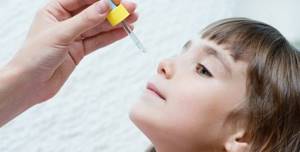
Nasal drops Naphthyzin, Nazivin, Oxymetazoline are used for runny nose of various symptoms. In almost every home, children's drops for nasal congestion and runny nose are stored in the home medicine cabinet. Many parents consider such drugs to be safe and use them without following the instructions and recommendations of the doctor, which is far from the truth. According to statistics, cases of poisoning from runny nose drops are increasing every year. Intoxication can occur not only when taking Naphthyzin orally, but also from frequent nasal instillation.
According to medical research, poisoning is more common in children:
- Take drops in adult dosage and concentration (adult concentration - 0.1%, children's concentration - 0.05%);
- Use of the drug in children under one year of age;
- Purchasing cheaper analogues;
- When instilling, many parents press hard on the bottle or do not control how many drops get into the nasal passage, which leads to an overdose.
When it enters the body, Naphthyzin is absorbed into the blood and distributed through the circulatory system to the organs, not excluding the brain. Signs of intoxication in children are pale skin, weakness and drowsiness, decreased appetite and play activity. There is also a severe type of overdose, in which the following symptoms occur: pale and cold skin, depressed consciousness, and less commonly, coma.
Parents should consult a doctor if the first signs of intoxication occur. With prompt and proper treatment, severe complications can be prevented. The main way to reduce an overdose of Naphthyzin is to rinse the stomach with warm water.
Corvalol
Corvalol is a common drug used for a sedative effect. Many people with heart disease use this drug, although it has not been proven to have beneficial effects on the heart. Rather, Corvalol is a means to relieve stress and fears that can lead to a heart attack. If you have a disease or worsening heart function, Corvalol will not help.
When consuming a large amount of Corvalol, poisoning occurs with phenobarbital, a substance included in its composition. Phenobarbital is a psychotropic substance that has a strong effect on the central nervous system. Used to treat seizures in epilepsy. Pure phenobarbital is sold on the basis of a doctor’s prescription and prescription. Corvalol is sold in free form.
Corvalol poisoning occurs due to excessive use of phenbarbital. The symptoms are similar to psychotropic drug poisoning. Stages of Corvalol poisoning in a child:
- The first stage is characterized by severe drowsiness and lethargy of the child, apathy to everything that is happening, practically does not respond to the stimulus, and answers the questions posed;
- In the second stage, a superficial coma occurs. There is no reaction to the stimulus, the child is unconscious, there is no reaction to speech, but reacts to pain;
- In the third stage, the child falls into a deep coma. The child has no complete reaction to any stimuli. Breathing problems arise, which can lead to respiratory arrest. Phenobarbital depresses the respiratory center in the brain.
First aid for Corvalol intoxication:
- Rinse the stomach with warm water.;
- Take sorbents (crush about 25 grams of activated carbon to powder, dissolve in 150 ml of water);
- Call for medical help;
- If the child is unconscious, you should place him on his side (to avoid choking on vomit) and check his breathing every two minutes. If the respiratory system stops working, you need to start artificial respiration.
Symptoms of rat poison poisoning
- Severe headache. Its degree depends on the dose of the drug received. With increasing dosage, pain increases, and their localization is found in various places.
- Dizziness and weakness of the body resulting from extensive blood loss. Both internal and external bleeding may occur: from the nose, gums, and bloody spots in the urine are also possible.
- There is a decrease in appetite and vomiting occurs. This is due to the poison entering the gastrointestinal tract. Possible stomach upset, manifested by diarrhea with bloody impurities.
- The skin turns pale as a result of impaired blood clotting and significant blood loss.
- Inhibited reaction of the body to external influences.
- Changes in the functioning of the organs of vision and hearing when a huge amount of poison enters the body.
Types of poison
- Ratside and zinc phosphide. Rarely used due to increased toxicity. They deliver a lightning strike to rodents, which die within a couple of hours after consuming the bait. The use of such poisons is limited and is used when absolutely necessary, where other means do not help.
- Old prohibited products, including arsenic, lead sulfates, phosphorus, are not sold due to the enormous danger to humans.
- Medicines against rats and mice that are freely available and contain zoocoumarins. The action of these substances is based on a blood clotting disorder, so rats and mice die by bleeding from the inside.
Types of zoocoumarins
- First generation rodenticides include: Warfarin, Izoindan, Ratindan, Ethylphenacin. These drugs are less dangerous because they do not linger in people, being freely excreted in the urine within three to four days. However, some rats have developed immunity to such components. They act slowly, so scientists have synthesized substances that have a stronger effect.
- Next generation anticoagulants: Difenacoum, Bromadiolone, Brodifacoum, Flocumafen. They have a more powerful effect on rodents. A feature of such drugs is their cumulative effect, making them more difficult to remove from the human body. The action occurs in a short time, but the toxicity is higher compared to other toxic substances.


